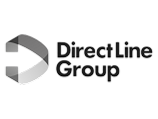Leadership &
human skills.
Reimagining learning.
Empowering people to lead, adapt, and thrive. We bring together L&D expertise, smart technology, engaging content, and human connection to create learning experiences that build the skills and capabilities that truly matter.
Skills & capability development for all
We provide engaging learning experiences across a wide range of core people development topics: Build the leadership, management, project management, and human skills that matter most in today’s fast-moving, AI-enabled world.
core topic areas covered.
years of designing engaging learning experiences.

Leadership & management
Developing the best managers and leaders for over 30 years - recognised as a Top 20 leadership development provider globally.
Human-centred skills
Boosting personal development and effectiveness – sharpening the critical human-centred skills and capabilities needed to thrive in an AI-enabled world.
Essential business skills
Improving essential departmental and functional business skills – training and development for busy working professionals and teams.
Project management skills
Building project management capability – through training courses, eLearning, simulations, and certification preparation. Learn from the experts.
Creating a spirit of learning for great brands
Hemsley Fraser is an award-winning full-service learning and development provider. Talk to us today about how we can support learning and performance development in your business.
Courses & digital learning
Powering up individuals and teams – boosting their skills, capabilities and performance – through training courses, learning experiences and digital learning.
Custom programs
Delivering custom and large-scale global learning experiences – co-creating programs across a blend of content, technology and services – to meet goals and performance improvement expectations.
Consulting & services
Partnering clients to transform their learning & performance development – helping them achieve the growth expectations of individuals, teams & the organization.
We help organizations with their people development challenges
The world’s changing fast - are your people keeping up? We help top brands…

Improve retention, engagement & performance
We help boost retention, engagement, and performance through human-centred learning experiences that build essential leadership and people skills.

Upskill & reskill teams to thrive
We support clients in upskilling and reskilling their teams through engaging learning experiences that build critical human and leadership capabilities — ensuring their people stay relevant and ready for the future of work.

Develop manager & leader capabilities
Drawing on 30 years of global leadership and management development expertise, research, and best practice, we equip managers to perform at their best — and be ready for tomorrow.

Boost connection, resilience & adaptability
We help boost connection, resilience, and adaptability through human-centred learning experiences that strengthen mindset, collaboration, and change-readiness.
Who we help
Discover the different audience groups that we help
Individual learners
Grow skills, unlock potentialWe support individual learners’ personal and professional development with a wide range of training courses and digital learning experiences.
Groups & teams
Group & team training & developmentWe help train and develop teams through in-company courses, tailored programs, and digital learning experiences.
Organizations
Boost performance & meet your goalsWe partner and support organizations to activate talent, boost skills, transform capability and realize their business goals.

Our journey & commitment to excellence
At the heart of our company is a simple, powerful belief: when people thrive, organizations do too. Founded with a vision to create a spirit of learning and make work—and life—better, we deliver exceptional learning experiences that drive real impact.

"Hemsley Fraser proactively shine the headlights on what’s happening in the L&D industry and this proactive approach helps DLG to stay a step ahead and be more prepared and anticipate change. It truly feels like one team, it’s an honest partnership where we lean into both challenges and opportunities together."
Modern, enterprise & fast-growing global businesses love us!
You may not have heard of Hemsley, but you’ll definitely know the clients we work with.








Featured resources
Navigating middle management
Becoming a great ‘manager of managers’ – how to successfully navigate the squeezed middle.
Human skills in an AI world
Boosting human skills & capabilities are crucial for thriving in an AI-enabled world, and for tackling increasingly complex problems.
Navigating uncertainty
In an increasingly uncertain world, we need to embrace uncertainty, rather than shy away. But how?
L&D Impact Survey
2025 L&D Impact Report: We surveyed 800+ UK & US based L&D, HR, People & talent professionals from a range of sectors.
Ready to get started?
We love to talk. Tell us more about your context, goals and requirements. We’ll be delighted to help.